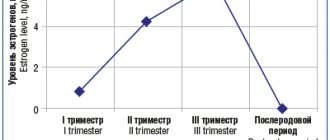Pain Treatment Center
Alekseeva
Oksana Alexandrovna
23 years of experience
Doctor, highest qualification category, member of the European Association of Neurologists, Russian Interregional Society for the Study of Pain (ROIB), Association of Interdisciplinary Medicine. Has experience working in hospital and outpatient services. He has seven published works on neurology.
Make an appointment
In ensuring the normal functioning of the human body, one of the key positions is occupied by the autonomic nervous system (ANS) - a complex of nervous structures responsible for maintaining a constant internal environment (homeostasis). The efforts of the ANS regulate the functioning of the circulatory and lymphatic systems, internal organs, and endocrine glands. The ANS itself is part of the nervous system (NS), but has an important feature - autonomy, that is, a person cannot control it with his own will.
Various disorders in the functioning of the ANS are called vegetative-vascular dystonia (VSD). This term does not mean a separate disease itself, but a syndrome - a condition caused by diseases of certain organs and systems (mental or somatic pathologies, hormonal imbalances).
Main symptoms and signs
The manifestations of VSD are diverse; the general list includes over several dozen items, but patients experience only a few of them (usually from 5 to 20) in different combinations. An important point: with VSD, there is a combination of several symptoms that appear simultaneously, but in the complete absence of organic disorders. A separate manifestation of any of these signs is not a reason for diagnosing vegetative-vascular dystonia, since it usually indicates a specific pathology.
Doctors distinguish several forms of VSD, classifying them on the basis of identifying relatively typical sets of symptoms that resemble the course of certain pathologies of organs or systems.
Respiratory form of VSD
Respiratory vegetative-vascular dystonia is the most common. The patient complains of the inability to take a deep breath, is afraid of suffocating, gasps for air, feels soreness, tightness in the throat, heaviness or pain in the chest, and coughs frequently.
Tachycardial form
Complaints of rapid heartbeat (tachycardia), irregular heart rhythm, sensation of vascular pulsation and heat in the temples and neck. It should not be confused with a similar picture with arrhythmia, paroxysmal tachycardia.
Cardiological form
In the area of the heart, pain of a different nature is noted (long-term aching or sharp, sharp), without a clear localization. During an attack of cardiac vegetative-vascular dystonia, the patient is anxious and breathes heavily. The pain lasts longer than with cardiovascular diseases (angina pectoris, myocardial infarction), does not depend on physical activity and is not relieved by appropriate medications (validol, nitroglycerin and others).
Hypotonic form
Characterized by dizziness, darkening of the eyes, sudden perspiration on the forehead, sweating, weakness, cold palms. Blood pressure drops briefly to 90/60 or below.
Hypertensive form
During an attack, tachycardia and heart pain are observed against the background of a short-term increase in blood pressure. The main difference from real hypertension: the pressure does not exceed 150/90.
Asthenic form
Performance decreases, complaints of fatigue, weakness, inability to concentrate, and sometimes body temperature rises slightly. Tremor (shaking in the hands) is possible, especially with the slightest physical exertion or a stressful situation. Irritability for no apparent reason or due to insignificant reasons, tearfulness.
Visceral form
Manifested by symptoms from the gastrointestinal tract (functioning disorder, nausea, diarrhea, vomiting, irritable bowel syndrome).
Mixed form
It combines certain signs characteristic of all the above forms of VSD, in arbitrary combinations.
Sometimes patients experience acute manifestations of symptoms, so-called attacks of dystonia or vegetative crises. An attack of VSD is characterized by sudden, spontaneous and rapid development, regardless of the circumstances. It can happen both during physical activity or a stressful situation, and at rest or sleep; alone or in a crowded place. Patients are afraid of suffocation, fear of death from respiratory or cardiac arrest, some feel feverish, others feel cold.
Separately, it is worth mentioning pre-syncope and fainting. They can have different origins; based on trigger mechanisms, they are distinguished:
- psycho-emotional - as a result of experiences, fear, reaction to the sight of blood;
- orthostatic - due to a sudden change in position, usually when abruptly getting up from a chair or bed;
- hypotonic – due to a sharp decrease in blood pressure.
Loss of consciousness is usually short-lived, lasting 1-3 minutes, the patient quickly comes to his senses. A history of fainting may indicate more severe pathologies, such as adrenal or cardiovascular insufficiency, nephropathy, or diabetes mellitus.
With such an impressive range of complaints, patients often do not experience any pathological changes in the structure or functioning of organs and systems. They often experience fear of developing a serious pathology, attributing to themselves some kind of disease based on similar signs. So, some fear paralysis due to mild numbness of the limbs or a heart attack due to chest pain.
Do you have symptoms of vegetative-vascular dystonia (VSD)?
Only a doctor can accurately diagnose the disease. Don't delay your consultation - call
Symptoms of vegetative-vascular dystonia
- The most characteristic symptoms of VSD are: Headaches
- Dizziness
- Weakness
- Increased sweating (wet palms)
- Fainting or fainting
- Noise in ears
- Drowsiness
- Sudden emotional swings
- Panic attacks
- Obsessive syndromes
- Anxiety
- Suspiciousness
- Neurosis-like conditions
- Increased heart rate
- Changes in body temperature
Vegetative-vascular dystonia is also characterized by the manifestation of severe pain in the chest and heart, changes in heart rhythm (up to complete blockade) and other symptoms associated with the cardiovascular system.
Diagnostics
To begin with, the doctor, during a conversation with the patient, collects a detailed anamnesis - finds out the complaints, their nature, frequency of occurrence, the presence of a hereditary factor (are there people in the family who suffer from confirmed VSD).
Then a general examination is carried out, attention is paid to the patient’s behavior and his emotional background.
Due to the presence of symptoms similar to those of various other diseases (arrhythmia, hypertension, pathologies of the thyroid gland, gastritis, etc.), each patient with suspected VSD must undergo a detailed therapeutic examination in a clinical setting. To confirm the diagnosis of VSD, it is necessary to absolutely exclude diseases with similar symptoms. For this purpose, laboratory tests are prescribed:
- general blood analysis;
- general urine analysis;
- liver and kidney function indicators;
- analysis of thyroid hormone levels;
- clarifying tests at the discretion of the doctor.
Next, a referral is given for instrumental examinations, of which the most frequently used are:
- electrocardiography (ECG);
- echocardiography;
- 24-hour Holter blood pressure monitoring;
- fibrogastroduodenoscopy;
- Ultrasound of the abdominal organs, kidneys, neck vessels, thyroid gland;
- chest x-ray;
- spirometry;
- bicycle ergometry.
Sometimes the doctor requires additional diagnostic methods, such as computed tomography (CT), magnetic resonance imaging (MRI), electroencephalography, colonoscopy and others. Various functional tests are also carried out (psycho-emotional, orthostatic, physical exercise, pharmacological).
Causes of occurrence and development
The etiology of VSD, as well as its symptoms, is extremely diverse. Among the main reasons, doctors name:
- pathological changes that occurred during pregnancy or childbirth (intrauterine hypoxia, infectious process, birth injuries, etc.);
- changes in hormonal levels (during puberty or during hormonal therapy);
- hereditary tendency (presence of autonomic disorders in close relatives);
- traumatic brain injuries of any severity;
- traumatic stressful situation, frequent psycho-emotional stress;
- high mental stress;
- excessive, or conversely, insufficient physical activity;
- toxic effects of certain substances;
- unbalanced, irregular nutrition;
- long-term course of chronic diseases (diabetes mellitus, hypertension, coronary heart disease, bronchial asthma, hypo- and hyperthyroidism, gastric ulcer, etc.);
- chronic lack of sleep, sleep disorder;
- sudden changes in weather conditions or prolonged stay in a place with severe climatic conditions;
- the presence of foci of infectious agents (chronic sinusitis, rhinitis, otitis, tonsillitis, etc.);
- bad habits (smoking, alcoholism, drug addiction).
There are certain risk groups, people from whom are more likely than others to develop VSD: people who are underweight or overweight, have low resistance to stress, and occupy responsible positions; girls during puberty, women during pregnancy and menopause.
Effect on pregnancy and fetus
Neurocirculatory dystonia during a special period for a woman negatively affects both the pregnancy and the embryo. VSD is distinguished by hypertonic, hypotonic and mixed type during pregnancy. The effect of each type on the woman and the unborn child is described in the table:
| VSD type | Harm to a pregnant woman | Harm to the fetus |
| Hypotonic | It provokes anemia, dysfunction of the placenta, as well as constant headaches and dizziness. | The fetus does not receive enough nutrients, as a result of which the child is born weak and underweight. |
| Hypertensive | In late pregnancy, toxicosis develops. Internal uterine bleeding is possible, as a result of which the placenta detaches. The woman panics. | Due to increased maternal anxiety, the fetus is negatively affected. Increased tension in the smooth muscles of the uterus often provokes miscarriage. |
| Mixed | Causes the greatest discomfort for a pregnant woman. Combines ailments of the 2 previous types. | It poses a danger to the life of the fetus in the womb. |
Treatment
Therapeutic measures consist of a set of effective methods, each of which is selected individually. Since most of the occurrences of VSD occur due to stress, it makes sense to pay attention to ways to combat them:
- normalization of sleep;
- rejection of bad habits;
- building an adequate work and rest regime, if necessary, the issue of changing jobs is considered;
- nutritious nutrition in compliance with the meal schedule;
- performing special sets of physical exercises, therapeutic exercises, yoga;
- work with a psychologist (individual or group classes, psychological trainings, consultations);
- physiotherapeutic procedures (massage, electrophoresis, contrast and therapeutic showers, etc.);
- Spa treatment.
All of the above methods are quite effective; when used, not only the disappearance of VSD symptoms is noted, but also an overall positive effect on the body as a whole.
Features of managing a pregnant woman
If a woman was diagnosed with dystonia before pregnancy, then with its onset the symptoms may worsen. It is also possible that the patient had already managed to get rid of VSD syndrome earlier, but the signs began to appear again during pregnancy. The development of severe fatigue, increased sweating, blood pressure lability and edema should alert both the patient and the doctor.
In addition, one should not take the emotional state of a pregnant woman lightly. Tearfulness, irritability, stress and other signs can lead to depression, which in turn affects the development of the fetus.
Treatment of VSD during pregnancy largely involves normalizing lifestyle. Adequate sleep and rest, absence of emotional stress, adherence to a daily routine and adequate physical activity are necessary. Proper and timely nutrition also plays a special role.
Each type of VSD requires a special approach to treatment:
- if dystonia develops of the hypotonic type, the patient is recommended to do slow jogging, dancing, and walking. Food products include daily consumption of meat, milk, cheese, cottage cheese, buckwheat, chocolate and tea;
- VSD of the hypertensive type can also allow swimming and hiking. In your diet you need to limit your intake of salt, liquids, sugar and spices. The diet should contain dairy products, vegetables, meat and cereals.
Treatment of dystonia with folk remedies is very popular: for the hypotonic version of VSD, barberry is used, for the hypertensive version, hawthorn is used in the form of decoctions or tinctures.
All described tips should be followed only after consulting a doctor. It is he who draws up a physical activity plan and diet, taking into account possible contraindications. In addition, the doctor additionally monitors the child’s development, the risk of fetal death in the early stages and other points.
All measures for the prevention and recovery of pregnant women with VSD:
- correct daily routine - sleep at least eight hours, alternating work with rest;
- walks in the open air;
- physical activity (morning exercises, race walking or running);
- massage (especially necessary for concomitant osteochondrosis);
- use of sedatives, such as music therapy;
- proper nutrition.
The most important condition for the normal course of pregnancy with VSD is monitoring the course by a doctor and the absence of self-medication.
Drug therapy for VSD
Prescription of medications is resorted to in case of ineffectiveness of non-drug measures. Treatment of VSD involves the use of medications strictly as prescribed by the doctor. Only a specialist determines the necessary drugs, their dosage and frequency of administration in each specific case. Among the main groups of medications are:
- sedatives of plant origin (normalize sleep, have a mild and effective effect);
- antidepressants – reduce anxiety, relieve headaches of varying intensity and duration;
- tonic and restorative drugs (improve tone, increase resistance to stress, physical and mental stress);
- metabolic agents – improve and normalize metabolic processes in the body, in particular in the brain and nervous system;
- tranquilizers - prescribed with caution, as they have clear indications and many side effects;
- microelements and vitamins;
- drugs aimed at eliminating various specific symptoms and their causes (hypotensive, antiarrhythmic, prokinetics, antispasmodics, etc.).
The patient must understand that VSD does not belong to the category of severe pathologies. With proper treatment and strict adherence to medical recommendations, recovery is guaranteed. The right attitude towards recovery plays an important role, when a person is not afraid of the manifestations of dystonia, but strives to overcome them. This is especially true for attacks of anxiety, restlessness, and various phobias - as soon as the groundlessness of such fears is realized, they gradually disappear forever.
Therefore, it is very important not to be afraid to talk about the problem. Sometimes patients are embarrassed by this and are in a vicious circle when they cannot cope with the problem on their own, but do not dare to visit a doctor. And it’s completely in vain, because already during a conversation with a specialist it turns out that it is much easier to cope with the situation together, moreover, the prognosis is favorable.
Reasons why you need to take vitamin D
According to experimental studies, this component is most effective if you drink it in large doses. The daily norm for an adult is 5 thousand units or 35-50 thousand units 2 times a week. There are a number of benefits that come from taking vitamin D.
Strengthening bone tissue
With a lack of this vitamin, the following pathologies develop:
- osteoporosis;
- bone fragility;
- osteopenia.
If the body is simultaneously deficient in calcium, this increases the risk of fractures. Even 10 years ago, scientists determined that by systematically taking vitamin supplements, bones become stronger. Calcium combined with vitamin D helps enhance bone mineralization. To replenish their reserves, they take special mono-additives from 2 thousand units. per day.
Normalizing skeletal muscles
According to research, they primarily need vitamin D. With a lack of it, muscle weakness begins to worry, the process of muscle contraction is disrupted, which negatively affects the production of effort.
Statistics also indicate that with a normal daily intake of this vitamin, muscle protein is not broken down as actively.
Muscle power
Scientists have proven that if you drink vitamin D, your muscles become stronger. This increases the height of the jump. Experts have found that the ability of muscles to contract and produce effort depends on its content in the body.
In 2008, testing was carried out, as a result of which it became known that:
- those who are deficient in vitamin D will produce less power than those with normal concentrations of this micronutrient;
- when consuming vitamin D, muscles produce force better;
- if muscle effort remains at a weak level for a long time, this has a bad effect on the condition of the bones.
Therefore, vitamin D reserves must be replenished.
Maintaining Lean Muscle Mass
Consuming this vitamin prevents the accumulation of fat deposits and helps maintain lean muscle mass. With its deficiency, muscles weaken and the amount of subcutaneous fat increases.
Research confirms that a lack of vitamin D is directly related to an increase in the proportion of fat in muscle mass. The majority of people tested for the level of this component were found to be deficient. Moreover, their weight was 24% higher than normal. If you fail to lose weight for a long time, the reason may be a lack of vitamin D.
Getting rid of skin diseases
A deficiency of this vitamin increases the risk of developing the following skin diseases:
- eczema;
- dermatitis;
- psoriasis;
- acne;
- dandruff.
As soon as vitamin D reserves are restored in the body, inflammatory processes go away faster. If taken for psoriasis, peeling of the skin also stops.
Blood Sugar Control
Vitamin D intake increases insulin sensitivity. This is an effective way to prevent the first signs of diabetes.
Scientists from South Asia conducted a study. It involved women who had low sensitivity to insulin. They were on the verge of developing diabetes and drank 4,000 units of this vitamin every day.
After this, their sensitivity to insulin increased significantly. This once again confirms that with normal vitamin D levels, the predisposition to diabetes is almost zero.
Preventing the development of multiple sclerosis
Vitamin deficiency causes decreased bone mineralization and can cause osteoporosis. But with timely replenishment of vitamin D reserves in the body, risk factors are minimized. Then you don’t have to worry about developing multiple sclerosis. Researchers have found that if you take a multivitamin complex that contains vitamin D, the risk of developing this disease is reduced by 40%. About 200 thousand women took part in this study.
Studies have also been conducted among African Americans with multiple sclerosis. Their results also showed that there is a relationship between vitamin D deficiency and this disease. Scientists have confirmed that a reduced content of this vitamin increases the risk of developing sclerosis and complicates the process of its treatment.
The ability to protect yourself from cancer
Taking vitamin D is a good prevention against the following types of cancer:
- breasts;
- lungs;
- prostate;
- colon.
If you take this vitamin for lung cancer, the cancer tumor stops its growth. Then the chances of recovery increase. According to statistics, the survival rate among those suffering from cancer is 2 times higher in people with normal levels of vitamin D concentration. Now scientists continue to study its anticancer properties.
Getting rid of asthma
One of the American universities conducted a study in which they found that high concentrations of vitamin D have a special effect on the human body:
- lung function improves;
- bronchial hypersensitivity decreases;
- hormonal levels improve.
Science has proven that by consuming vitamin D, the well-being of patients suffering from asthma returns to normal. At the same time, the treatment process is much more effective. If the content of this component in the blood is low, it is more difficult for the body to cope with respiratory tract pathologies.
Improving the functioning of the reproductive system in men
Researchers in Copenhagen have carefully studied the effect of vitamin D on men's health. They found that there is a close connection between its level in the blood and sperm quality. With vitamin D deficiency, the percentage of active and healthy sperm decreases. If there is enough of it, sexual functions in men are also normal.
With additional intake of this component, the functioning of the reproductive organs is improved and healthy seed material is produced.
Healthy heart and blood vessels
A lack of vitamin D often causes the development of cardiovascular diseases. If its concentration is normal, the heart will be healthy. Over 1.5 thousand middle-aged people took part in research at the Institute of Cardiology.
Researchers assessed vitamin D levels, heart function and vascular health early in the study and 5 years after it. Based on the results of a repeated examination, scientists found that 120 people already suffer from heart problems.
At the same time, people with high blood pressure and a lack of this vitamin were twice as likely to develop heart disease. Studies have confirmed that regular intake of vitamin D serves as a good prevention against pathologies of the cardiovascular system.
Normal brain function
Vitamin D deficiency causes cognitive decline. This is especially true for people of retirement age. 8 years ago, a study was conducted among 752 women. It confirmed that with a lack of this component, cognitive functions deteriorate.
Past studies have also shown that low vitamin D levels cause neurological disorders. But the latest experiment has proven the importance of taking this vitamin in order to support normal brain activity.
Fetal brain development
If vitamin D has a positive effect on the functioning of the female brain, then it will also be beneficial for the baby’s brain, which develops in the womb. According to scientific research, it is known that with a lack of this component during pregnancy, the brain cells of the fetus suffer. This increases the risk of developing mental disorders and diabetes. Bone diseases may appear. First of all, this concerns rickets.
Women's reproductive system and healthy motherhood
With a normal level of vitamin D, the female body is protected from the following deviations:
- poor fertility;
- problems with implantation of the fertilized egg;
- development of diabetes mellitus during gestation.
Low levels of this vitamin also increase the likelihood of needing a cesarean section. This is explained by a decrease in the performance of the vaginal muscles during childbirth.
Relief from stress and mental illness
A healthy person is more likely to become depressed or suffer from other brain problems than someone who is deficient in vitamin D. Scientists have not yet fully understood its role in the brain. But what they do know is that after taking it, metabolic processes are established and neural connections are restored.
At the same time, antioxidant activity returns to normal, then the brain becomes protected from the destructive effects of oxidative reactions in the body. Vitamin D also improves the growth of nerve endings, allowing you to better control your mood and emotions. If it is not enough, schizophrenia may develop or the person may suffer from a split personality.
Strengthening the immune system
Vitamin D contributes to the development of strong immunity. With its deficiency, platelets become less active, and the body’s ability to resist dangerous infections decreases. When its reserves are replenished, the immune system is activated and easily copes with the invasion of pathogens.
This component not only helps blood cells cope with microbes. It also fights inflammation, which can interfere with healing.
Improved kidney function
It is also important for them to get enough vitamin D. It helps fight chronic diseases and reduces the mortality rate from diseases of the excretory system. A lack of this vitamin increases the risk of developing kidney disease.
18. Improve metabolism and fight hypertension
With an acute deficiency of vitamin D, it is difficult to control blood pressure and metabolic processes in the body. As a result, you can develop diabetes or gain excess weight.
If you take vitamin supplements with this component and calcium, your blood pressure and metabolism return to normal. But if you take vitamin D separately, the effect will be better.
Guaranteed slimness
A reduced concentration of this element leads to excess body weight gain. Scientists have proven that when it is deficient, the fat layer increases in volume faster. This happens as follows:
- The level of parathyroid hormones in the blood increases, which contributes to the development of obesity.
- The level of intracellular calcium increases.
- The metabolic mechanism is activated, causing fat accumulation.
- The processes responsible for burning fat are suppressed.
Previously, scientists believed that a lack of vitamin D was a result of excess weight gain. But recent experiments prove the opposite - first the body experiences a lack of it, and then obesity appears.
Reducing the risk of developing Parkinson's disease
Scientists have noticed that with a lack of vitamin D, symptoms of this disease appear earlier:
- hands tremble;
- muscles atrophy;
- the functioning of the digestive system is disrupted;
- mobility decreases.
According to statistics, Parkinson's disease appears no earlier than 60 years of age, but with acute vitamin D deficiency this figure drops to 40.
Prevention of bone diseases
If this component is lacking, osteomalacia or rickets may develop. With rickets, softening of bone tissue occurs, which increases the risk of fractures and leads to spinal deformation. Most often this disease occurs in childhood.
Adults are more susceptible to osteomalacia due to the development of osteoporosis. In this case, pain is first experienced in the lumbar spine, then the pain spreads to the chest and arms. This is accompanied by constant fatigue. Lifelong vitamin D supplementation is then required to maintain normal health.
Preventive and therapeutic measures in the fight against chronic obstructive pulmonary disease
This disease is accompanied by respiratory weakness. It also causes obstruction of the lungs and bronchi. As a result, the patient often suffers from bronchitis or develops asthma. Vitamin D helps treat these diseases. After taking it, the symptoms of these diseases disappear faster and test results improve.
Fighting childhood anemia
If there is a lack of vitamin D, the child may become anemic. It causes serious damage to internal organs. In this case, a deficiency of red blood cells occurs, and the level of hemoglobin changes.
The condition is accompanied by lethargy and dizziness. Regular consumption of vitamin D will help cope with this situation and prevent the development of complications.
Protection against infections
Timely intake of this vitamin helps prevent the development of infectious diseases. It serves as an effective prophylactic in the fight against viruses, fungi and bacteria.
Vitamin D is also effective in cases of low immunity and in the treatment of influenza, tuberculosis and eye infections.
| Product Name | Vitamin D content in IU for every 100 g |
| Fish oil, particularly cod oil | 10000 |
| Cod liver | 4000 |
| Fatty fish: salmon, tuna, mackerel, cuta, Atlantic herring, mackerel, halibut, eel, trout, sea bass | From 70 to 266 |
| Seafood | Up to 150 |
| Animal liver | Up to 50 |
| Butter | Up to 35 |
| Egg yolk | Up to 24 |
| Meat | Up to 13 |
| Corn oil | Up to 9 |
| Whole milk | From 0.3 to 4 |
| Forest and mountain mushrooms (chanterelles, shiitake) | To 10 |
| Rennet cheeses | Up to 4 |
| Fish caviar (black and red) | Up to 4 |
| Fatty dairy products (cream, sour cream, cottage cheese) | Until 3 |
| Seaweed | Up to 2 |
| Tofu | Up to 1.5 |
Doctors treating VSD
In addition to the attending physician, a neurologist, endocrinologist, otolaryngologist, ophthalmologist, and instrumental diagnostic specialists take part in the process of diagnosing VSD. Depending on the symptoms, you may need to consult a specialist doctor - cardiologist, gastroenterologist, pulmonologist, urologist and other related specialties.
At the clinic of JSC “Medicine”, a comprehensive approach allows us to accurately establish the mechanisms of the occurrence and development of VSD, triggers, and timely identify or exclude concomitant pathologies. Doctors of the highest category with many years of experience, doctors of medical sciences, practice here. This is the key to successful treatment, but much depends on the patient himself: how timely he sought qualified medical help, how carefully he followed the doctor’s instructions for diagnosis and treatment.
Complications
The most common complication of VSD is vegetative crisis. This is a sudden attack during which a massive disruption of the autonomic nervous system occurs. Depending on the type of violation, there are three types of crises.
- Sympathoadrenal. Accompanied by a massive release of adrenaline into the blood, an increase in blood pressure, pulse and body temperature. The skin turns pale, hands and feet become cold and numb. The person experiences severe chills, unexplained anxiety, and fear of death. The condition is also often called a panic attack.
- Vagoinsular. The patient feels hot and suffocated, his face turns red, and severe sweating appears. Blood pressure decreases, pulse becomes rare. Often the condition is accompanied by frequent loose stools.
- Mixed. The crisis manifests itself with mixed symptoms.
If the symptoms of VSD are ignored for a long time and there is no treatment, the pathology can cause the development of:
- persistent arterial hypertension, poorly corrected by medications;
- cardiomyopathy;
- diabetes mellitus type 2;
- cholelithiasis or urolithiasis;
- stroke;
- myocardial infarction.
Excessive excitability of the autonomic nervous system also causes a decrease in immunity.
Indications for treatment
The main indication is a clinically confirmed diagnosis of vegetative-vascular dystonia. Since VSD is a syndrome, the indications for its therapy correspond to disorders of various etiologies: vascular, psychological, neurological, cardiological and many others.
If your professional responsibilities involve high mental and emotional stress, stressful situations, overwork, or if you have a hereditary predisposition to VSD, sign up for a consultation with a specialist. Timely prevention will help avoid worsening problems, because the disease is easier to prevent than to treat.
Contraindications
Contraindications for the treatment of VSD are determined by the methods used. If we talk about drug therapy, then almost every drug has contraindications for use. The same can be said about physiotherapeutic procedures. That is why the course and tactics of treatment are determined by a highly qualified doctor who is able to take into account all factors.
There is one contraindication that is simultaneously applicable in all cases - self-treatment. In the case of VSD, this is especially true, since such patients are often excessively suspicious and tend to attribute severe pathologies to themselves. In an attempt to treat a non-existent disease, they can not only significantly aggravate their situation, but also cause irreparable harm to the body.
conclusions
In recent years, there has been a significant increase in the incidence of VSD in pregnant women. This is due to scientific and technological progress, urbanization, increasing levels of psycho-emotional stress, poor ecology, family circumstances, etc. In order to avoid the negative impact of the problem on the course of pregnancy and the condition of the fetus, it is necessary not only to prevent it in time, but also to carry out complex psycho-, herbal and physical therapy when symptoms appear or worsen. An important rule for prescribing treatment is the absence of spontaneous decisions. They can cause harm to the mother and the child who is in her womb and is subject to numerous influences, both positive and negative.
Cost of initial appointment, diagnostic examinations and treatment
As for the initial appointment, its cost in most cases is low; in fact, it is a consultation procedure. But one should not neglect its importance - an experienced doctor is able to recognize characteristic symptoms and notice even small but important manifestations of abnormalities.
The price of diagnostic procedures and laboratory tests may vary significantly in different clinical cases. For one patient, general tests and several examinations will be enough; for another, diagnosis may take longer and require additional studies and tests. This is due to both the complex nature of VSD and the individual characteristics of each patient’s body.
A similar picture is typical for treatment. Its cost is determined by many factors; sometimes the therapeutic process has to be adjusted. To roughly navigate the prices for diagnosis and treatment of VSD in Moscow, you can familiarize yourself with the corresponding table of costs for the most common diagnostic procedures.
Dosage
The complex of vitamins B1, B6, B12 is available in two forms: tablets and solution for injection.
Neuromultivit tablets are prescribed to adults in a daily dose of 1 tablet 1–3 times a day. The frequency of administration depends on the clinical picture of the disease and individual tolerance. It is recommended to take the tablets preferably after meals, without chewing, with a sufficient amount of water. The course of treatment also depends on the disease, usually the duration ranges from 5 to 30 days.
The injection solution is intended for intramuscular administration; it is strongly not recommended to administer the solution intravenously. The drug at a dosage of 2 ml per day is administered for 5–10 days, then the dosage is reduced and injections are given for three weeks. All procedures are carried out under the supervision of the attending physician.
Experts recommend switching from injections to tablets as soon as possible.
Advantages of treating VSD at the clinic of JSC "Medicine"
Vegetative-vascular dystonia is a multifactorial disorder in the body; its successful treatment requires an integrated approach and coordinated work of doctors of many specialties. Among the undeniable advantages of JSC “Medicine” (clinic of academician Roitberg), it is worth mentioning 3 key points:
- High professionalism of doctors - the staff consists of more than 300 experienced practicing doctors and diagnosticians of 67 medical specialties. Leading corresponding members of the Russian Academy of Sciences, academicians, professors, doctors and candidates of medical sciences advise here. The clinic was the first in Russia to receive accreditation according to the international standards for assessing the quality of medical care JCI. Joint Commission International, considered the highest level of accreditation worldwide.
- Ultra-modern technical base - equipped with the latest generation diagnostic and treatment equipment from the world's leading manufacturers. This allows you to create your own scientific and clinical developments in almost all medical areas. For many years, the clinic of JSC "Medicine" has served as a clinical base for the Department of Therapy and Family Medicine of the Russian National Research Medical University named after N.I. Pirogov (RNIMU) and is among the innovatively active healthcare institutions in Moscow.
- High-quality medical care - the effectiveness and safety of treatment is guaranteed by the principle of Academician N.A. Semashko, which states: “One patient - one doctor.” The attending physician is assigned to each patient and works closely with colleagues from related medical specialties. A developed diagnostic base and medical care technology built according to international standards make it possible to make a diagnosis at an unprecedented speed. In just 1 day from the moment of the initial examination and diagnostic measures, you can receive detailed results of laboratory tests, detailed diagnostic reports and doctor’s recommendations.
It is important to know: VSD is not a critically severe disorder, but can provoke one in the absence of proper medical care. In case of early access to a doctor, treatment time is significantly reduced and financial costs are reduced. Don’t delay your visit, make an appointment at a time convenient for you, and we will help you regain your health!









